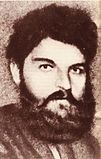Italian general election, 1919
|
|
|||||||||||||||||||||||||||||||||||||||||||||||
|
|||||||||||||||||||||||||||||||||||||||||||||||
|
|||||||||||||||||||||||||||||||||||||||||||||||
|
|||||||||||||||||||||||||||||||||||||||||||||||
Vittorio Emanuele Orlando
Liberal Democratic
Francesco Saverio Nitti
Radical Party
General elections were held in Italy on 16 November 1919. The fragmented Liberal governing coalition lost the absolute majority in the Chamber of Deputies, due to the success of the Italian Socialist Party and the Italian People's Party.
The old system of using single-member constituencies with two-round majority voting was abolished and replaced with proportional representation in 58 constituencies with between 5 and 20 members.
The election took place in the middle of Biennio Rosso ("Red Biennium") a two-year period, between 1919 and 1920, of intense social conflict in Italy, following the First World War. The revolutionary period was followed by the violent reaction of the Fascist blackshirts militia and eventually by the March on Rome of Benito Mussolini in 1922.
The Biennio Rosso took place in a context of economic crisis at the end of the war, with high unemployment and political instability. It was characterized by mass strikes, worker manifestations as well as self-management experiments through land and factories occupations. In Turin and Milan, workers councils were formed and many factory occupations took place under the leadership of anarcho-syndicalists. The agitations also extended to the agricultural areas of the Padan plain and were accompanied by peasant strikes, rural unrests and guerrilla conflicts between left-wing and right-wing militias.
...
Wikipedia



